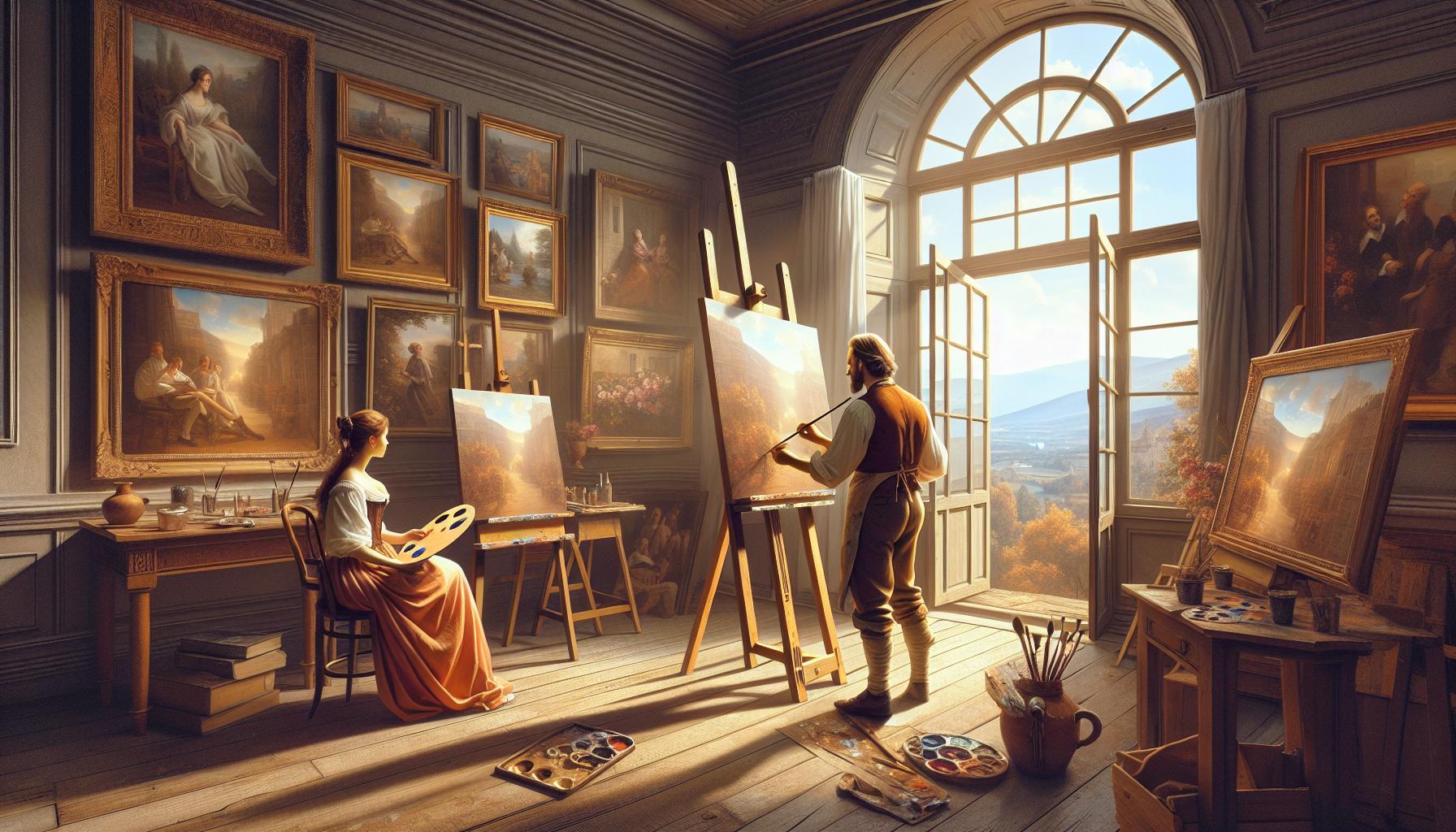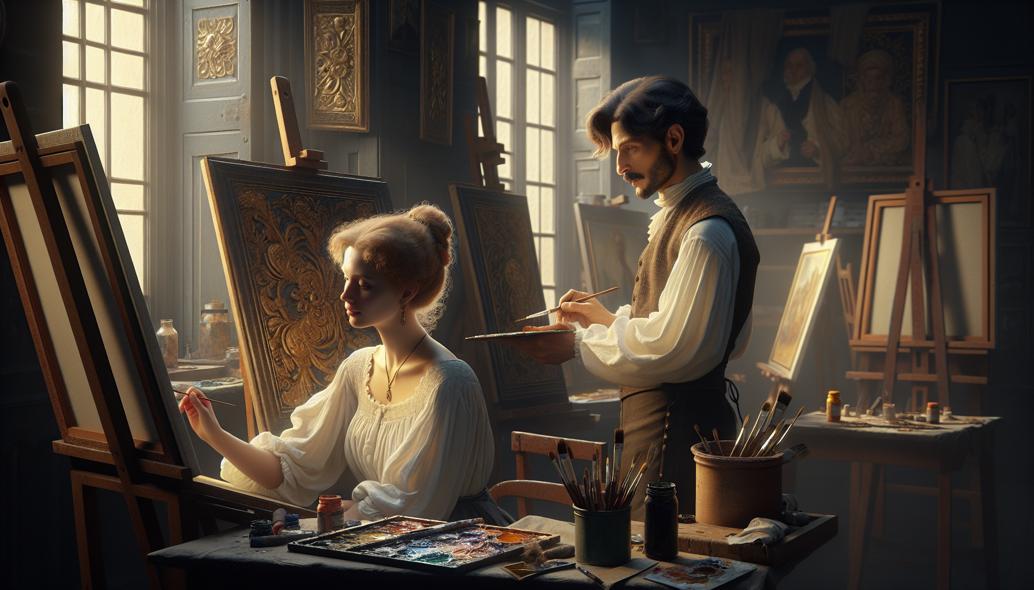Exploring the Use of Underpainting in Oil Painting
Discover the transformative power of underpainting in oil painting! This age-old technique adds depth, luminosity, and richness to your artwork, setting the stage for stunning compositions. Dive into the secrets behind masterful oil paintings today!

Exploring the Use of Underpainting in Oil Painting
When we think of masterpieces in the world of oil painting, we often marvel at the intricate details, the exquisite blending of colors, and the emotive power that these works convey. Yet, beneath these layers of beauty often lies a less visible yet crucial technique—underpainting. This foundational method has been used by artists for centuries to enhance the depth, luminosity, and richness of their final compositions. Let’s delve into the fascinating world of underpainting in oil painting and uncover how this practice can elevate your art.
What is Underpainting?
Underpainting is essentially the first layer of paint applied to a canvas. This initial stage serves as a base for subsequent layers of paint and often forms the foundation for the overall composition. Historically, underpainting has been employed to outline the main forms and shapes of a painting, setting the stage for the layers of color and detail that will follow.
The Purpose of Underpainting
The primary purpose of underpainting is to establish a strong groundwork for the painting. It is an invaluable tool for several reasons:
- Value Establishment: Underpainting helps to define the value structure (lightness and darkness) of a piece. This ensures that the composition has a solid sense of depth and volume from the outset.
- Guidance: The technique serves as a road map for the artist, guiding them through the painting process with a clear layout of forms and tonal values.
- Color Harmony: An effective underpainting can influence the subsequent layers of paint, subtly affecting their hues and contributing to overall color harmony.
- Texture and Depth: Different approaches to underpainting, such as using rough or smooth brushstrokes, can add texture and depth to the final work.
Techniques and Approaches in Underpainting
There are varied techniques for creating an underpainting, each with its unique benefits and methods. Some of the most popular include:
1. Grisaille
Originating from the French word for "gray," grisaille is a monochromatic underpainting technique. Traditionally, artists use shades of gray to model the forms and volumes of the composition. This method is superb for establishing contrast and value without the distraction of color.
2. Imprimatura
Imprimatura involves laying down a thin, transparent wash of a single color onto the canvas. Often, earth tones or neutral colors are chosen. This wash sets the tonal stage and can impart warmth or coolness to the subsequent layers of paint.
3. Bistre
Bistre underpainting uses a brownish-gray ink or paint, often derived from burnt wood or soot. This approach is particularly effective for establishing shadow areas and adding a rich, muted under-layer to the artwork.

Practical Steps to Creating an Underpainting
Creating an effective underpainting involves several key steps:
- Choose Your Medium and Tools: While oil paint is the most traditional choice for underpainting, some artists use other media such as acrylics or tempera for the initial layer due to their fast drying times. Select the appropriate brushes and tools for the desired texture and finish.
- Prepare Your Canvas: Ensure your canvas is properly primed. Applying a layer of gesso can provide a smooth, receptive surface for your underpainting.
- Outline Your Composition: Use light, initial sketches to outline the basic forms of your composition. This can be done directly on the canvas with charcoal or a light pencil.
- Apply the Underpainting Layer: Based on your chosen technique (Grisaille, Imprimatura, or Bistre), begin applying the underpainting. Focus on establishing the values and forms while maintaining a loose, flexible approach.
- Build Up the Layers: Once the underpainting is dry, you can start adding layers of color and detail. Allow the foundational tones and textures from your underpainting to guide and influence your work.
Value of Patience and Observation
One of the keys to mastering underpainting is understanding the value of patience and careful observation. Take the time to observe how light interacts with various parts of your subject and how these observations can be translated into your underpainting. Pay attention to tonal relationships and strive to capture the essence of your subject through values before adding color.
Troubleshooting Common Challenges
As with any artistic technique, underpainting may pose certain challenges, especially for beginners. Here are a few common issues and their solutions:
1. Overworking the Underpainting
It’s easy to get carried away and overwork the underpainting. Remember that it is meant to be a foundation, not the finished work. Focus on establishing the primary forms and values and resist the urge to over-detail at this stage.
2. Incorrect Value Judgment
Accurately judging values can be tricky, particularly in monochromatic techniques like Grisaille. Squint your eyes to simplify the forms you're looking at and better see the value relationships. Regularly step back from your canvas to view it from a distance.
3. Integrating with Top Layers
Sometimes, artists struggle with integrating the underpainting seamlessly with the top layers. To alleviate this, consider using glazes and thin layers of paint that allow some of the underpainting to remain visible, thereby harmonizing the entire painting.
Conclusion
Mastering the art of underpainting in oil painting can significantly enhance the depth, richness, and overall quality of your work. By establishing a strong foundation through thoughtful value establishment and tonal planning, you can guide your composition to new heights. Whether you choose the classic Grisaille, the warm Imprimatura, or the muted elegance of Bistre, the underpainting technique offers a robust framework upon which your artistic vision can flourish.
So, the next time you embark on an oil painting project, remember the power of underpainting—a technique that channels centuries of artistic wisdom to bring your creations to life with depth and dimension. Dive deep into this method, experiment with different approaches, and watch how it transforms your oil paintings from the ground up.
Happy painting!
